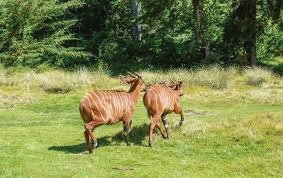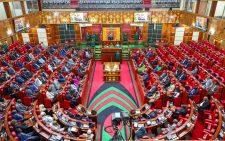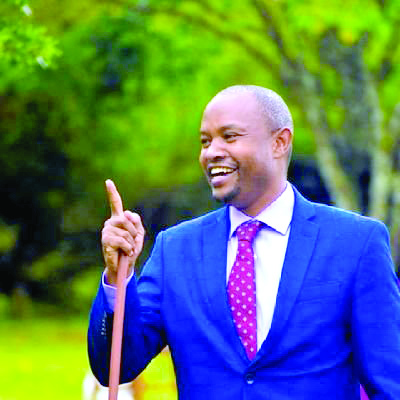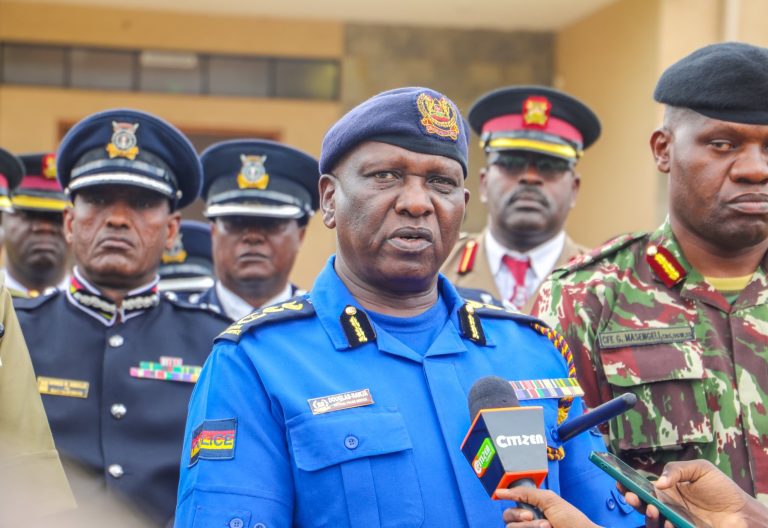How AI is keeping the endangered Kenya’s Mountain Bongo safe

The Mount Kenya Wildlife Conservancy (MKWC), which is part of the historic Mount Kenya Safari Club, has made an intentional move to tap artificial intelligence to transform conservation efforts, to keep the endangered mountain Bongo safe.
Led by entrepreneur and conservationist Humphrey Kariuki, the conservancy is setting new standards in wildlife protection, not only in Kenya but the region.
Using AI-powered cameras and real-time monitoring systems, MKWC is now able to identify individual bongos, track their movements, monitor their health, and even detect behavioural changes that may signal stress or illness.
Instead of relying solely on human patrols, which can miss subtle patterns or take months to gather information, AI now delivers detailed data in a fraction of the time.
“What used to take four years to collect, we can now access in just three months,” says Dr Robert Aruho, head of the conservancy.
“It’s not without challenges, like occasional downtime, but overall it’s working well and reducing the need for constant human presence in sensitive areas.”
This technological leap is supported by a Memorandum of Understanding with Chester Zoo and ConservationAI.
The AI systems are embedded throughout the conservancy, scanning the forest day and night for the safety of the species, which is one of the most unique species in the world.
The mountain bongo (Tragelaphus eurycerus isaaci) is one of the most unique and rare antelope species in the world, and it holds particular significance in Kenya, where it is endemic.
With fewer than 100 individuals remaining in the wild, mostly in isolated pockets of forest in the Aberdares, Mount Kenya, Mau, and Eburu ranges, the mountain bongo is an example of ecological and evolutionary uniqueness.
What sets the mountain bongo apart is its combination of physical beauty, elusive nature, and highly specific habitat needs.
It is the largest forest antelope, distinguished by a rich chestnut coat marked with vivid white vertical stripes, long spiralled horns in both males and females and an impressive body mass that can reach up to 270 kilograms.
These features make it visually stunning and biologically distinct from other antelope species in Africa.
Unlike savannah-dwelling antelopes, mountain bongos are shy and mostly nocturnal, preferring the dense, high-altitude montane forests.
They rely on these forests not only for food—mainly leaves, bark, and herbs—but also for cover and protection.
Their survival is closely tied to the health of these forest ecosystems, which are under increasing threat from deforestation, agricultural encroachment, and climate change.
Using AI, the conservancy can now recognise not just the animals but also environmental changes—tracking rainfall, vegetation shifts, and temperature, which helps anticipate disease outbreaks or food scarcity.
This kind of predictive monitoring is a game-changer.
Humphrey Kariuki, who took over the conservancy in 2013, has long been committed to wildlife preservation.
In 2022, MKWC launched the Mawingu Mountain Bongo Sanctuary, where captive-bred bongos are prepared for rewilding.
That same year, the first five were successfully released back into their native habitat. AI is now helping to protect these reintroduced bongos during their most vulnerable early months.
MKWC emphasises that technology must work hand-in-hand with local knowledge.
“AI enables us to scale monitoring in ways previously unthinkable,” said Dr. Robert Aruho.
“But conservation is only sustainable when communities share ownership of the wild spaces they live alongside.” MKWC has trained local community rangers to interpret AI data and respond to alerts.
Maps of bongo movement generated by AI are also shared with nearby villages, reducing the risk of human-wildlife conflict and encouraging collaborative stewardship.
The AI network also plays a role in security by spotting suspicious activity or unusual movements that might indicate poaching threats, allowing rangers to respond faster and more precisely.
Since its implementation, incidents have dropped, and response times have improved dramatically. Real-time dashboards now guide daily operations, replacing sporadic manual reports and making it easier to adapt to changing conditions.
Beyond animal tracking, AI is being used to monitor forest regeneration in degraded zones.
Algorithms track canopy growth and species diversity, helping the conservancy prove the success of reforestation projects. This supports funding applications and strengthens the scientific basis for carbon offset programs linked to the sanctuary’s conservation work.
The broader vision of these initiatives includes high-end eco-tourism as a driver for sustainability.
Through the adjacent Mount Kenya Safari Club, guests are introduced to conservation in action. Many participate in “tech for wildlife” tours, where they see how AI supports everything from breeding programs to anti-poaching patrols.
The tourism revenue directly funds the sanctuary’s efforts, while local employment and environmental education programs ensure benefits are shared with the surrounding community.
With fewer than 100 mountain bongos left in the wild, every individual matters. Thanks to AI, the path toward producing close to 70 bongos by next year is secure.
Each bongo is tagged and tracked from birth, with its digital profile stored in the system. Any changes in its health or behaviour trigger alerts, allowing swift intervention.
In collaboration with the Kenya Space Agency, the conservancy is set to integrate satellite data with its AI systems.
There are also plans to train computer vision models on drones to map under-canopy vegetation and detect water stress during dry seasons, further fine-tuning the management of bongo habitat.
Dr Aruho, however, is careful to maintain perspective, saying that while he acknowledges that AI is a powerful tool, it’s not a replacement for human dedication and ecological understanding.
“We use data to support decisions—but this is still Kenyan soil, Kenyan rangers, Kenyan communities on the front line,” he says.
As the conservancy works to keep the bongo safe, he suggests that the blend of tradition and technology offers new hope not just for the mountain bongo, but for the broader model of African-led conservation.












